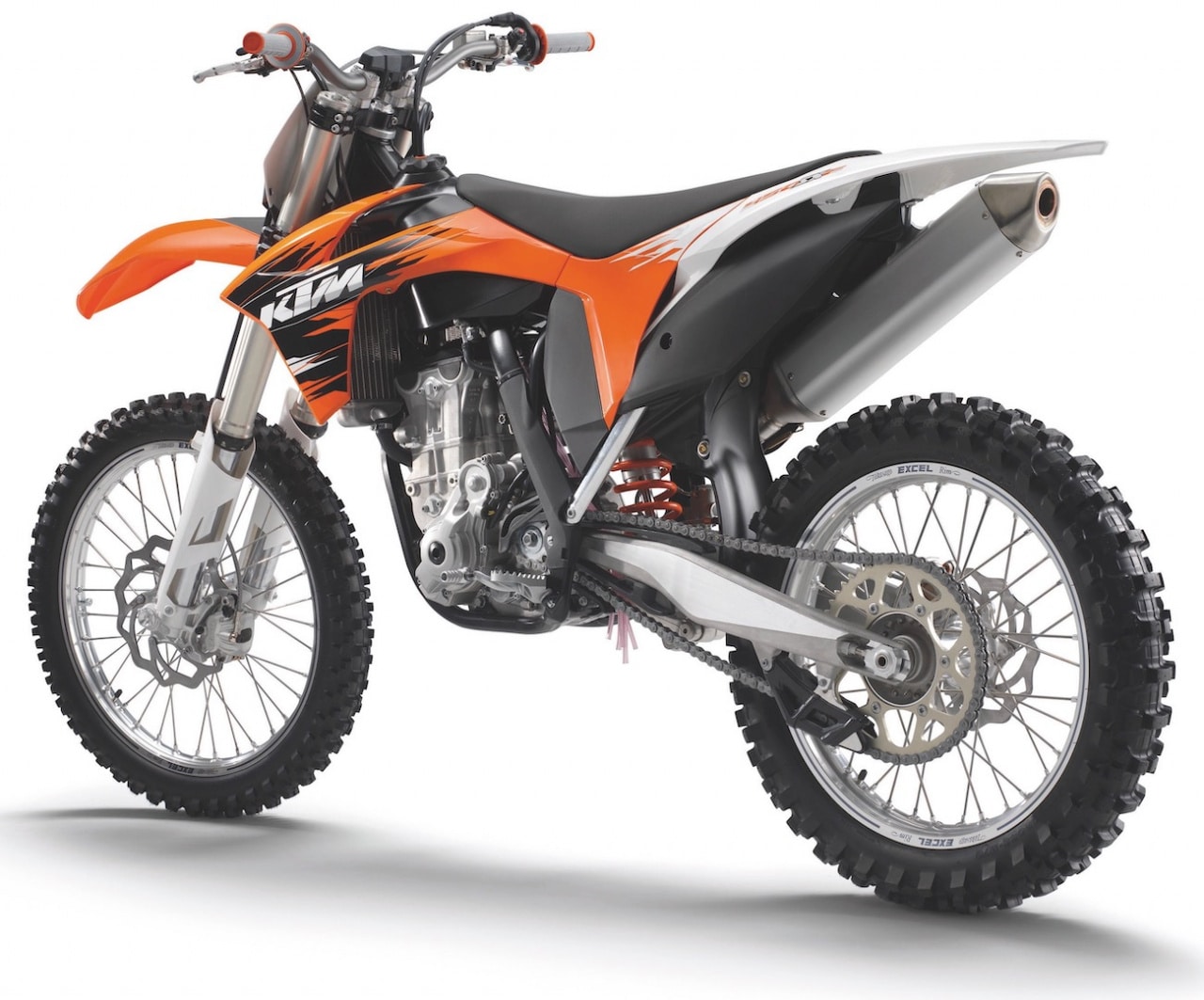ASK THE MXPERTS: SHOULD I GO SOFTER OR STIFFER?
 Dear MXA,
Dear MXA,
I own a 2011 KTM 450SXF and my usual track has big jumps, some with flat landings. I wonder whether I should soften or stiffen the suspension. And, whatever the answer, how many clicks I should I use? Personally, I’d rather have stiff suspension.
Congratulations on having a running 12-year old four-stroke. It seems as though you answered your own question with your last sentence, but we will expand the answer to help you. The 2011 KTM 450SXF still had a 41mm Keihin FCR carb, weighed 242 pounds and made 53.92 horsepower. The most notable change to the 2010 KTM 450SXF was the swap from the no-link PDS rear suspension to a rising-rate shock linkage. Here are some basics about living with your 2011 KTM 450SXF suspension.
Forks: The 2011 KTM 450SXF was not equipped with the current AER air fork or even the earlier 4CS fork ,but instead used WP’s closed-cartridge technology. It was not an especially good fork; softness was not one of its traits. We ran our stock 2011 WP forks at 12 clicks out on compression and 12 clicks out on rebound. The stock fork spring was plenty stiff, but if we thought that the forks were too soft, we would add 10cc of fork oil to each leg (through the air bleed hole on the fork cap).
Shock. We liked the 2011 KTM linkage system. Its main advantage over the previous PDS system was that the linkage was more “contractive.” What does that mean? The PDS no-link system always felt like it was fully extended, whereas the new linkage system seems to take a set with travel left in both directions. The linkage allowed the shock to both extend and contract from its base setting. The stock spring rate was 5.7 kg/mm, and if your static sag indicates that you need a different spring, you can work around this base setting. We think that the stock spring is good for riders from 160 pounds to 190 pounds. We ran the low-speed compression on 12 clicks out, the high-speed compression on 1-1/4 turns out and the rebound on 12 clicks out.
Test: To find out what you really need to do, set your race sag at 105mm, put the clickers in the position that we recommend, slip a zip-tie around the right-side fork leg and go ride on your usual track. After a couple fast laps, come in and look at the location of the zip-tie on the fork leg. If it is all the way down, then your forks are bottoming and you will have to turn the compression clicker in farther or add 10cc fork oil to each leg. If the zip-tie is more than 1-1/2 inches above bottoming them, you can turn the clicker out (counter clockwise) to soften up the forks.
The shock is a little harder to get a read on, but if it bottoms in G-outs or rides low in its stroke, start with the high-speed compression dial and turn it in‚ Typically about 1/8th of a turn. Inwards (clockwise) will make the shock feel stiffer and allow it to ride higher in its stroke; outwards (counter-clockwise) will make the shock softer and ride lower in its stroke. You will need to make changes in both directions to find the feel that works best for you.






Comments are closed.